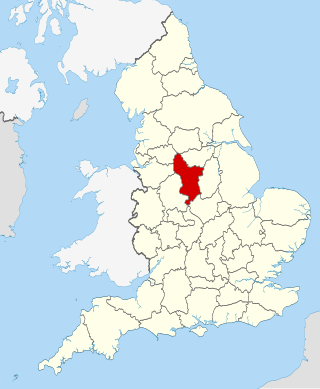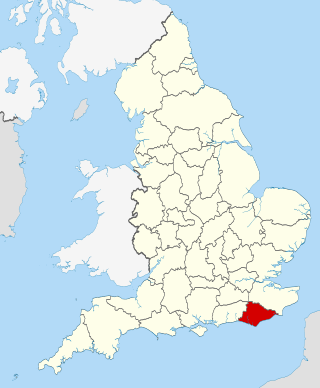There are 47 Grade II* listed buildings in Cambridge, England. In the United Kingdom, a listed building is a building or structure of special historical or architectural importance. These buildings are legally protected from demolition, as well as from any extensions or alterations that would adversely affect the building's character or destroy historic features. Listed buildings in England are divided into three categories—Grade II buildings are buildings of special interest; Grade II* buildings are buildings of particular importance; and Grade I buildings, which are those of "exceptional" interest. Around four per cent of listed buildings are given Grade II* status. [1]
Cambridge is a university town located in East Anglia, England. It is home to the University of Cambridge, founded in 1209, and many of the listed buildings are part of the university or its constituent colleges.

There are approximately 372,905 listed buildings in England and 2.5% of these are Grade I. This page is a list of these buildings in the county of Cambridgeshire, by district.

There are over 9000 Grade I listed buildings in England. This page is a list of these buildings in the county of Derbyshire, sub-divided by district.

There are over 9,300 Grade I listed buildings in England. This page is a list of the 111 of these buildings in the ceremonial county of the East Riding of Yorkshire. In the United Kingdom, the term listed building refers to a building or other structure officially designated as being of special architectural, historical or cultural significance; Grade I structures are those considered to be "buildings of exceptional interest". In England, the authority for listing under the Planning Act 1990 rests with Historic England, a non-departmental public body sponsored by the Department for Culture, Media and Sport.

There are over 9300 Grade I listed buildings in England. This page is a list of these buildings in the county of East Sussex.
There are over 9,300 Grade I listed buildings in England. This page is a list of these buildings in the county of Isle of Wight.
There are 67 Grade I listed buildings in Cambridge, England. In the United Kingdom, a listed building is a building or structure of special historical or architectural importance. These buildings are legally protected from demolition, as well as from any extensions or alterations that would adversely affect the building's character or destroy historic features. Listed buildings in England are divided into three categories—Grade II buildings are buildings of special interest; Grade II* buildings are Grade II buildings of particular interest; and Grade I buildings, which are those of "exceptional" interest. Only around two per cent of listed buildings are given Grade I status.

There are over 20,000 Grade II* listed buildings in England. This page is a list of the 183 of these buildings in the ceremonial county of the East Riding of Yorkshire.
There are over 20,000 Grade II* listed buildings in England. This page is a list of these buildings in the district of East Cambridgeshire in Cambridgeshire.
There are over 20,000 Grade II* listed buildings in England. This page is a list of these buildings in the district of Amber Valley in Derbyshire.
The county of West Sussex in South East England has 176 Grade I listed buildings. Such buildings are described by English Heritage, the authority responsible for their designation, as "of exceptional interest [and] sometimes considered to be internationally important". Grade I is the highest of the three grades of listed status in England: about 2.5% of the country's 374,000 listed buildings have this designation.

There are over 20,000 Grade II* listed buildings in England. This page is a list of these buildings in the district of Christchurch in Dorset.
There are over 20,000 Grade II* listed buildings in England. This page is a list of these buildings in the district of Corby in Northamptonshire.
There are over 20,000 Grade II* listed buildings in England. This page is a list of these buildings in the district of Daventry in Northamptonshire.

Stoke-on-Trent is a city located in Staffordshire, England. The city is a linear conurbation of six constituent towns. Stoke-on-Trent is considered to be the home of the pottery industry in England and is commonly known as the Potteries. Formerly a primarily industrial conurbation, it is now a centre for service industries and distribution centres.
This page is a list of the 101 Grade II listed buildings in the London Borough of Bexley. There are also four Grade II-listed entries on the Register of Historic Parks and Gardens of Special Historic Interest in England.
The Register of Historic Parks and Gardens of Special Historic Interest in England, created in 1983, is administered by Historic England. It includes more than 1,600 sites, ranging from gardens of public houses, to cemeteries and public parks.
The Register of Historic Parks and Gardens of Special Historic Interest in England, created in 1983, is administered by Historic England. It includes more than 1,600 sites, ranging from gardens of private houses, to cemeteries and public parks.
The Register of Historic Parks and Gardens of Special Historic Interest in England, created in 1983, is administered by Historic England. It includes more than 1,600 sites, ranging from gardens of private houses, to cemeteries and public parks.
The Register of Historic Parks and Gardens of Special Historic Interest in England, created in 1983, is administered by Historic England. It includes more than 1,600 sites, ranging from gardens of private houses, to cemeteries and public parks.
The Register of Historic Parks and Gardens of Special Historic Interest in England, created in 1983, is administered by Historic England. It includes more than 1,600 sites, ranging from gardens of private houses, to cemeteries and public parks.
![]() Media related to Grade II* listed buildings in Cambridge at Wikimedia Commons
Media related to Grade II* listed buildings in Cambridge at Wikimedia Commons